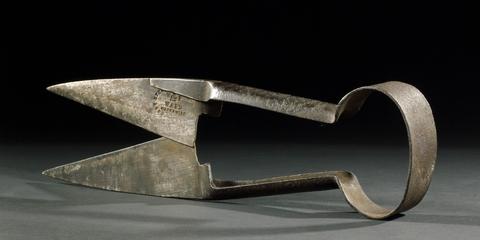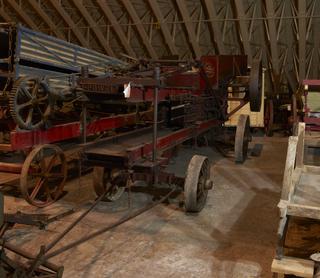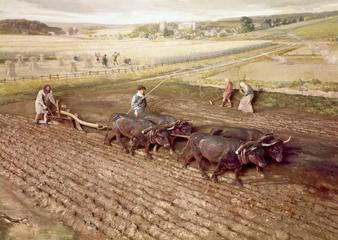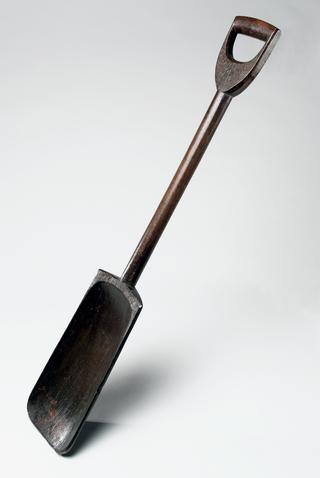
Draught recording dynamometer by Richard Clyburns
- Made:
- Gloucestershire
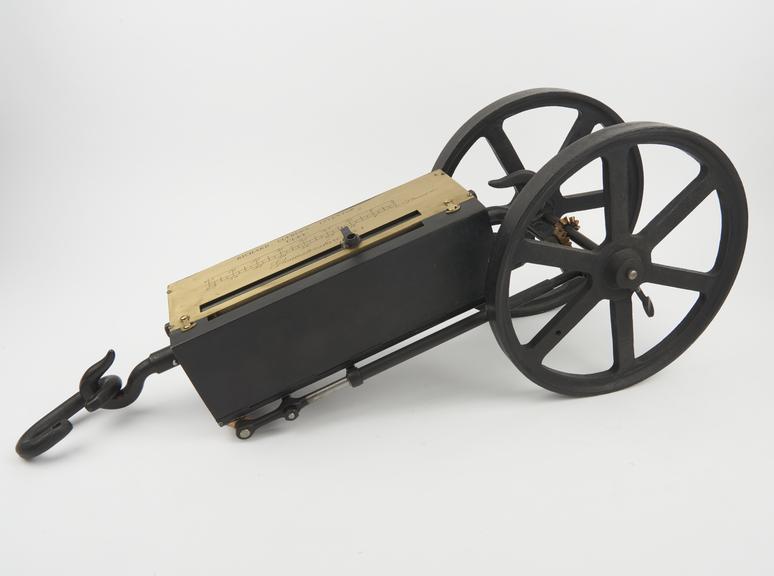
Draught recording dynamometer by Richard Clyburns, complete with land wheels, attachment link. With this, the strain was measured by the compression of a spiral spring an traced on a roll of paper. The divisions marked on the paper were spaced at gradually increasing distances apart to compensate for the increasing diameter of the take-up spool as the work progressed. The take-up spool was directly driven by the land wheels and a pencil actuated by the dynamometer traversed across the paper to an extent proportional tot he load transmitted: thus a record of both distance covered, and loading was obtained.
A dynamometer is an instrument for determining the force required for the work done, which in the case of the plough was measured by the strain upon the draught chain. To achieve this, the dynamometer was made a link in the draught chain and subjected to the necessary tension.
The use of the dynamometer resulted in greater precision in the comparison of draught under the same soil conditions, and was extremely useful in determining the relative merits of the ploughs at the many trials held during the 19th century. The first dynamometer appears to have been invented about 1770 by Mr. Samuel More, the Secretary to the Society of Arts. It was used in the ploughing trials help by the Society in 1773.
Details
- Category:
- Agricultural Engineering
- Object Number:
- 1960-104/1
- Materials:
- cast iron, brass (copper, zinc alloy) and metal (unknown)
- Measurements:
-
overall: 290 mm x 660 mm x 240 mm, 15.5 kg
- type:
- dynamometer
